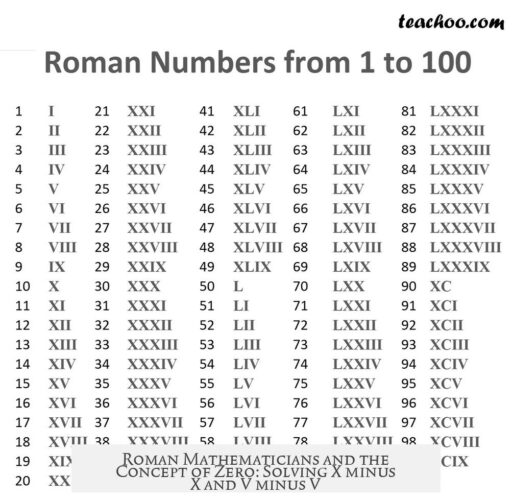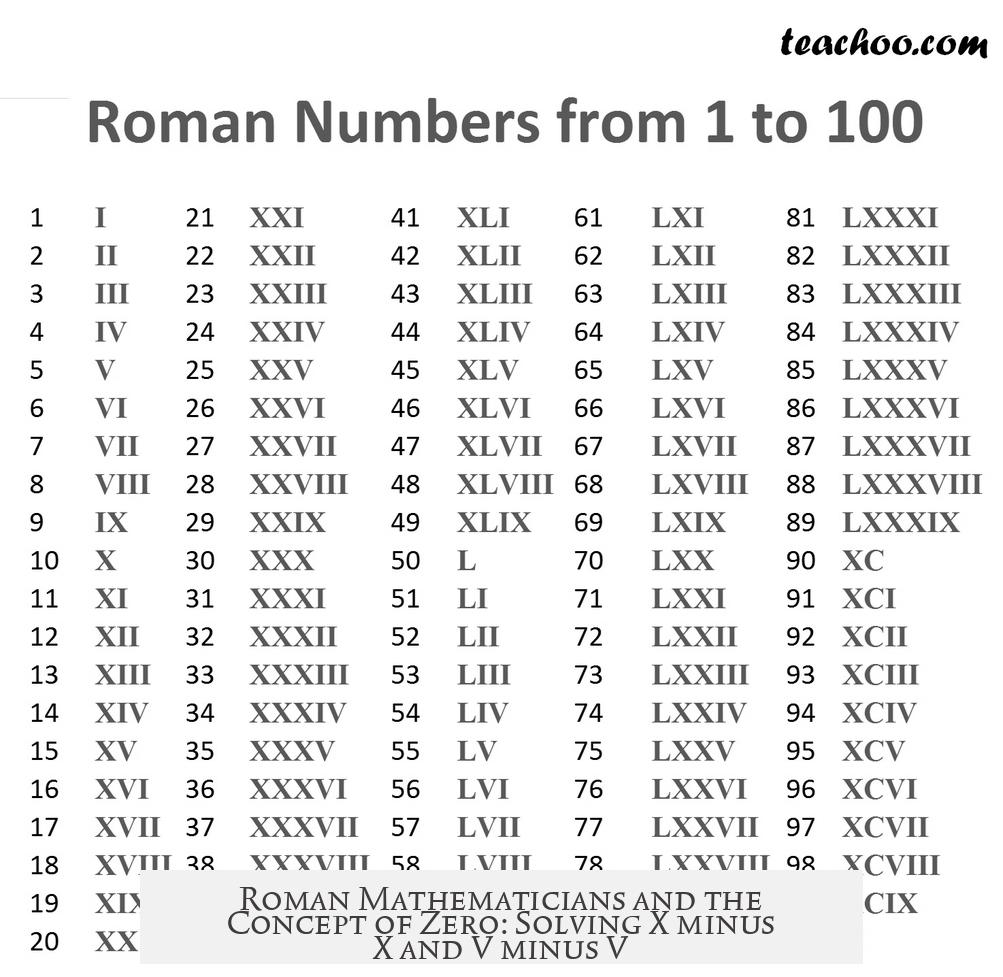Roman mathematicians would approach equations like X minus X or V minus V without using a symbol for zero because the Roman numeral system lacks any concept or notation for zero. In their arithmetic, X minus X or V minus V would present conceptual challenges rather than straightforward numeric results.
The Roman numeral system consists of letters representing fixed values, such as I for 1, V for 5, and X for 10. It is non-positional, meaning the value of a symbol is independent of its place in a number. This feature removes any demand for a placeholder symbol like zero, which is crucial in positional systems for indicating absence of a value in a digit’s place.
Roman numerals were primarily designed for counting, measuring, trading, and recording dates. Since they started counting from one, they never developed a numeral for zero. Roman culture and mathematics did not embrace zero as a number but more as an absence or concept, which complicated subtraction equations resulting in ‘nothing.’
For example, the equation X – X (10 minus 10) in the Roman system doesn’t have a direct numeral to represent the answer zero. A Roman mathematician would understand the operation but might respond that the result is ‘nulla,’ meaning “none” in Latin. However, ‘nulla’ was not a numeral but an expression used later in medieval times to denote zero conceptually.
Similarly, V – V (5 minus 5) would yield the same issue. Roman mathematicians would comprehend that removing V from V leaves nothing but had no symbol to depict zero. The idea of ‘nothing’ was philosophical and abstract rather than numeric.
When considering V – X (5 minus 10), the answer becomes more complex. Romans lacked a concept of negative numbers in arithmetic. In their worldview, negative values did not exist as numbers. Instead, debt or lack was viewed as the other party’s positive credit rather than a negative quantity on one’s own ledger.
- So, V – X would not equal -5 in Roman mathematics.
- A Roman mathematician might respond by saying Jim, who had 5 apples but owed 7, simply has no apples or would owe 2 apples in the future.
- They might interpret the situation as the creditor holding a positive claim, not the debtor carrying a negative number.
This approach shows how Roman mathematical thinking differed fundamentally from modern arithmetic that incorporates zero and negative numbers. The Romans focused on concrete numbers representing possession or quantities rather than abstract placeholders or deficits.
Historically, while civilizations like the Babylonians and later Greek and Indian mathematicians developed zero and negative number concepts, Romans did not integrate these ideas into their numeral system. Instead, in medieval Europe, scholars began using the Latin word nulla to indicate zero in texts alongside Roman numerals, but this was a linguistic, not numerical, innovation.
Algebraic and positional number systems requiring zero and negative values significantly advanced after the medieval period, influenced heavily by Hindu-Arabic numerals and mathematicians like al-Khwārizmī. These developments allowed arithmetic to expand beyond the Romans’ practical numeric system.
| Equation | Roman Numeral Interpretation | Modern Equivalent |
|---|---|---|
| X – X | No symbol for zero; interpreted as ‘none’ or nothing | 10 – 10 = 0 |
| V – V | No symbol for zero; conceptually difficult | 5 – 5 = 0 |
| V – X | No negative numbers; viewed as zero or future credit | 5 – 10 = -5 |
In summary, Roman mathematicians could perform subtraction using their numerals but lacked the notation and conceptual framework for zero and negative numbers. To them, zero was an absence rather than a numeral. Negative results were not numbers but obligations or debts considered through other means, reflecting a practical approach to mathematics suited to their society and economy.
- No Roman numeral represents the number zero; subtraction equaling zero posed conceptual difficulties.
- Equations like X – X or V – V would imply ‘no quantity’ but lacked symbolic notation.
- Negative numbers were unknown; V – X would not produce a negative value but represent a debt or future obligation.
- Roman mathematics focused on positive, concrete quantities due to the non-positional numeral system.
- The word nulla was used in medieval times to express zero linguistically but never as a Roman numeral.




